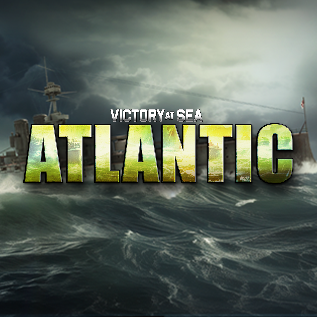Two Unusual Inventions of World War 2.
While creating our game Victory At Sea set in World War 2, we have researched a wide variety of the weapons of war. While many types are in game we felt that some while not suitable for the game required special mention due to their outlandish concepts!
Necessity is the mother of invention and World War 2 forced the inventors, scientists and engineers of the British Empire to think up new ways fight the Axis powers. Not only did they have to come up with great ideas with little resources but also within very tight timescales and under immense pressure.
Death Ray Radar.
Post World War One the British Government were concerned that the development of aircraft would leave the cities of Britain at risk from air bombardment. Some enemy airfields were only 20 minutes flight away and by the time intercepting fighters could be scrambled the attacking bombers could have hit their primary targets and be half way home. Anti-Aircraft guns of the time would also have been unable to hit high altitude bombers. With rumours of a Nazi death ray being developed Sir Robert Watson-Watt was asked if he could create such a device that could destroy enemy aircraft. Watson-Watt calculated it would be impossible to create a Death Ray but it may be possible to detect aircraft.
On 12th February 1935, Watson-Watt sent a memo to the Air Ministry called “Detection and location of aircraft by radio methods.” After a demonstration successfully proved this was possible, further research began on the subject of detecting and locating aircraft using a radio device. By the end of the year Watson-Watt and his team were able to detect aircraft up to 100km away which lead to 5 stations being set up to detect enemy aircraft and by the start of the second world war nineteen stations were built and played a key role in the Battle of Britain. Watson-Watt may not have delivered the Death Ray the British Government wanted but he did create a tool that helped saved countless lives.
Bouncing Bombs.
This one took some inspired out of the box thinking. The Allied Forces wanted to destroy German industry in order to prevent it from it creating weapons the feared weapons of war. In order to do this Allied attacks focused on factories.
Barnes Wallis (1887-1979) was an English engineer and scientist born in Derbyshire. He knew that one of the major engines behind the Nazi war machine was the Hydro Electric Dams in the heavily industrialized Ruhr Valley, but unfortunately destroying them was out of the question due to the strategically placed obstacles such as torpedo nets. To overcome this issue Wallis developed a Bouncing Bomb that skipped over obstacles, and then would hit the dam. On collision the bomb would sink and explode at a specified depth to cause the maximum damage possible. This technique also reduced the size of bomb required for such a task.
In the now famous bombing raid, 617 Squadron (now more commonly know as the Dam Busters) launched an attack on the dams of the Ruhr valley. The mission was a success and caused significant flooding, destroying 2 power stations and damaging many more.
Victory At Sea is out now for desktop PCs. You can download it for Windows, Mac and Linux.
You can check out the Steam page here.
You can check out the Mac Store page here.
To stay up to date with the latest info follow us on Facebook, Twitter, sign up to our Mailing List or Contact Us.


